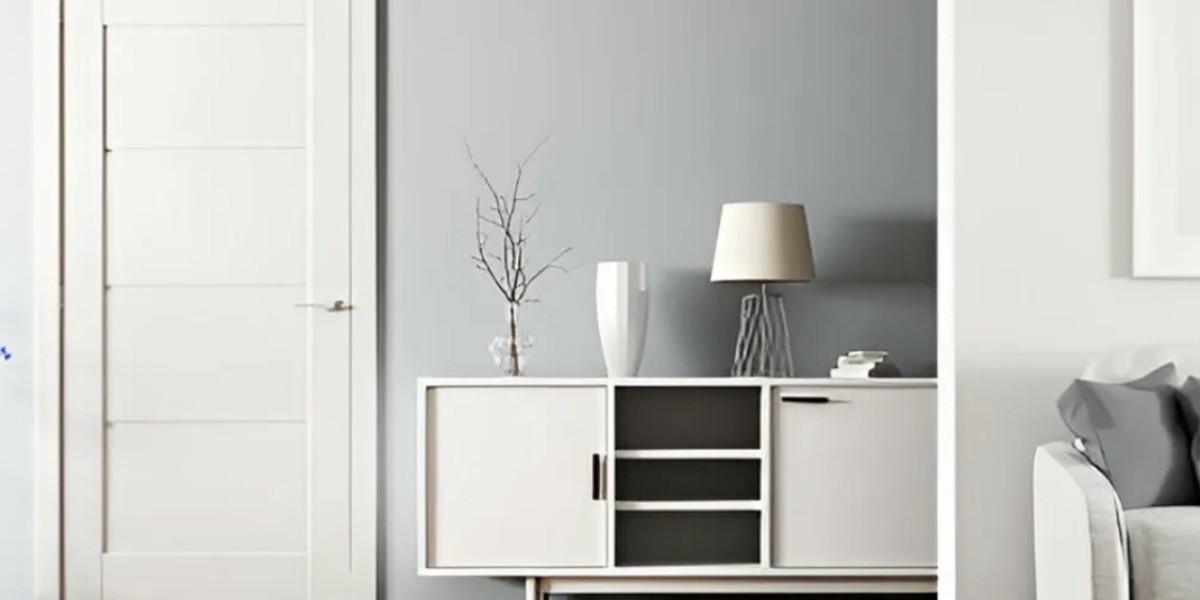Introduction
Fire safety is a critical aspect of modern construction, and fire-rated doors play a vital role in protecting lives and property. Among the various types of fire-resistant doors, fire-rated flat doors and fire-rated slab doors are widely used in commercial, industrial, and residential buildings. These doors are designed to withstand fire for a specified duration, preventing the spread of flames and smoke, and ensuring safe evacuation routes.
This blog will explore the features, benefits, applications, and differences between fire-rated flat doors and fire-rated slab doors, helping architects, builders, and property owners make informed decisions.
1. Understanding Fire Rated Doors
Fire-rated doors are specially constructed to resist fire for a designated period, typically 30, 60, 90, or 120 minutes. They are tested and certified according to international standards such as UL (Underwriters Laboratories), BS (British Standards), or NFPA (National Fire Protection Association).
Key Functions of Fire-Rated Doors:
Compartmentalization: Prevent fire and smoke from spreading to other areas.
Safe Evacuation: Provide protected escape routes during emergencies.
Structural Integrity: Maintain stability even under high temperatures.
2. What Are Fire Rated Flat Doors?
Fire-rated flat doors are smooth, flush doors with a simple and modern design. They are commonly used in offices, hospitals, hotels, and residential buildings where aesthetics and fire safety are equally important.
Features of Fire Rated Flat Doors:
✔ Smooth Surface: No raised panels, making them easy to clean and maintain.
✔ Lightweight Yet Durable: Constructed with fire-resistant cores (e.g., mineral wool, gypsum, or vermiculite).
✔ Customizable: Available in various finishes (painted, laminated, or veneered).
✔ Seal Integrity: Equipped with intumescent seals that expand under heat to block smoke.
Applications:
Commercial buildings (offices, malls, banks)
Healthcare facilities (hospitals, clinics)
Residential complexes (apartments, condominiums)
3. What Are Fire Rated Slab Doors?
Fire-rated slab doors are solid, heavy-duty doors made from fire-resistant materials without a pre-installed frame. They are often used in industrial settings, stairwells, and fire exits where maximum durability is required.
Features of Fire Rated Slab Doors:
✔ Solid Construction: Made from steel, timber, or composite materials with fireproof cores.
✔ High Fire Resistance: Can withstand extreme heat for extended periods (up to 180 minutes).
✔ Versatile Installation: Can be fitted into existing frames or new fire-rated door assemblies.
✔ Impact Resistance: Ideal for high-traffic areas prone to wear and tear.
Applications:
Industrial facilities (factories, warehouses)
Public buildings (schools, government offices)
Emergency exits & stairwells
4. Differences Between Fire Rated Flat Doors and Slab Doors
| Feature | Fire Rated Flat Doors | Fire Rated Slab Doors |
|---|---|---|
| Design | Smooth, flush surface | Solid, heavy-duty |
| Weight | Lightweight | Heavier |
| Material | Wood, metal, or composite with fire-resistant core | Steel, timber, or reinforced fireproof core |
| Fire Resistance | Typically 30-120 minutes | Up to 180 minutes |
| Aesthetics | More decorative, suitable for modern interiors | Industrial look, often used in utility areas |
| Installation | Pre-fitted with frames | Can be retrofitted into existing frames |
| Common Uses | Offices, hotels, homes | Factories, stairwells, fire exits |
5. Benefits of Installing Fire Rated Doors
A. Enhanced Safety
Slows down fire spread, allowing more time for evacuation.
Reduces smoke inhalation risks with intumescent seals.
B. Regulatory Compliance
Meets building codes (NFPA, IBC, BS 476) for fire safety.
Required in commercial and multi-story buildings.
C. Durability & Longevity
Resistant to warping, corrosion, and extreme temperatures.
Low maintenance compared to standard doors.
D. Insurance Benefits
May lower insurance premiums due to improved fire protection.
6. Choosing the Right Fire Rated Door for Your Project
Factors to Consider:
Fire Rating Requirement (30/60/90/120 minutes)
Material (Steel for high-security, wood for aesthetics)
Location (Corridors, stairwells, server rooms)
Aesthetic Needs (Flat doors for offices, slab doors for industrial use)
Budget (Steel doors are costlier but more durable)
7. Installation and Maintenance Tips
Installation Best Practices:
✔ Use certified fire-rated frames and hardware (hinges, closers).
✔ Ensure proper gap sealing with fire-resistant mortar or sealant.
✔ Follow manufacturer guidelines for alignment and fitting.
Maintenance Guidelines:
Regularly inspect seals, hinges, and closing mechanisms.
Avoid modifications (drilling holes or cutting) that compromise fire resistance.
Clean with non-abrasive materials to preserve the surface.
8. Conclusion
Both fire-rated flat doors and fire-rated slab doors are essential for modern fire safety strategies. While flat doors offer a sleek, aesthetic solution for offices and homes, slab doors provide robust protection for industrial and high-risk areas.
Investing in the right fire-rated door ensures compliance with safety regulations, protects occupants, and minimizes property damage in case of a fire. Always consult with fire safety experts and choose certified products for optimal performance.
By understanding the differences and applications of these doors, architects, builders, and property owners can make informed decisions to enhance building safety.
Final Thoughts
Fire-rated doors are not just a legal requirement—they are a lifesaving necessity. Whether you opt for a flat door for its elegance or a slab door for its rugged durability, prioritizing fire safety ensures a secure environment for everyone.








